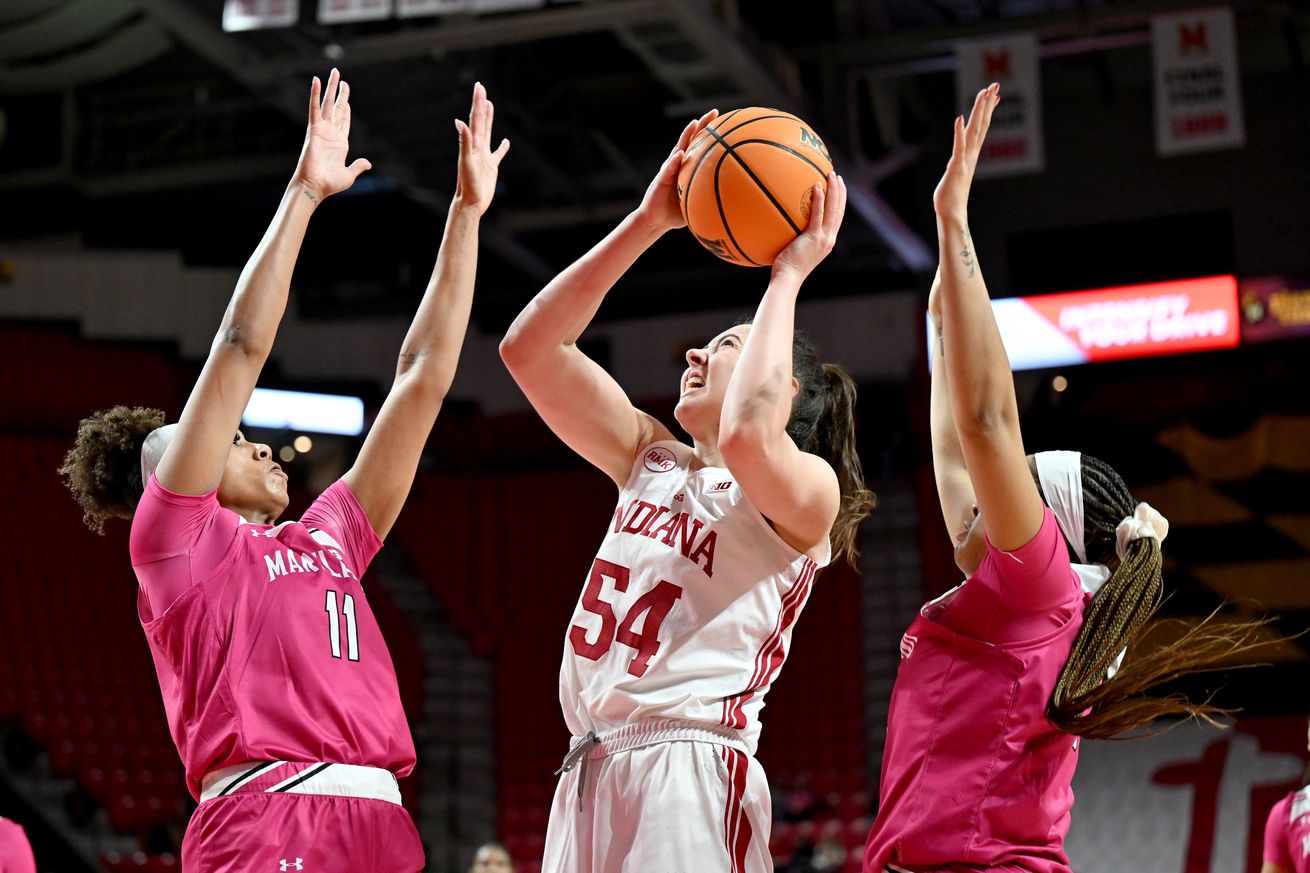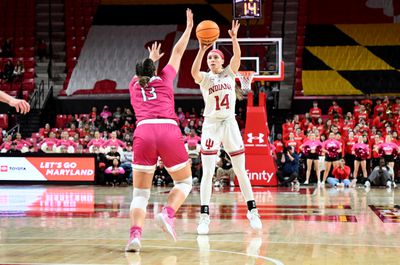
The Terps have struggled to shut down opponents this season in uncharacteristic fashion.
Uncharacteristic defense is costing Maryland women’s basketball meaningful games, ending in results which are slowly dictating what could be a lonely postseason.
In its past five games, Maryland has allowed an average of 88.8 points. The Terps are 1-4 in that stretch.
The defensive performances put forth by head coach Brenda Frese’s squad are simply not sustainable against steep Big Ten competition. Currently, the Terps have the second-worst scoring defense in the conference, allowing over 75 points per game on the season. They’ve twice conceded over 100 points, which had been done only one other time against a Frese-led Terps squad since she took over in 2002.
One of the premier issues facing this year’s squad has been has been its lack of execution in zone defenses. Maryland has applied a number of different zone sets this season, including a 2-3 and triangle-plus-two, the latter of which Frese confirmed the team employed against No. 10 Indiana.
“We were playing the triangle [plus] two,” Frese said. “We were trying to pick our poison with [Sara Scalia] and then be able to juggle with [Mackenize] Holmes, but it was too much.”
Holmes and Scalia combined for 55 points Wednesday night.
The reason Maryland sets itself up in zone is evident and understandable: the Terps don’t have enough sheer individual athletic ability to match up one-on-one with opponents. Versatility, Maryland does have. But that only works when it’s combined with athleticism and size.
What the Terps’ various zone defenses have focused on is providing ample support in the interior. Often, Allie Kubek — who stands at 6-foot-2 — isn’t enough of a presence in the post to contain the opposition’s most lengthy player. Against Indiana, she racked up four personal fouls trying to contain Holmes. Brinae Alexander acts as the Terps’ other forward, but she is better suited to a roaming role.
The Hoosiers are the third-worst rebounding team in the Big Ten, grabbing just 35.7 boards per game. But on Wednesday, they notched 33 rebounds to Maryland’s 24 and scored 32 points in the paint, which is substantial considering the attention allocated to that area.
When Maryland makes a concerted effort to clog up the paint, it consequently leaves parts of the perimeter open. Teams have had no problems taking advantage of those opportunities, hardly hesitating to let deep shots fly. This season, the Terps have allowed opponents to make an average of 7.6 threes per game, the most in program history, according to HerHoopStats.
To put things bluntly — Maryland has been eviscerated in both the paint and on the perimeter.

Photo by Greg Fiume/Getty Images
“[The triangle-plus-two] is something we’ve done in the past but we haven’t repped it a ton all year. So we had one practice to get it in and it was a fail,” Frese said. “So you just scrap it and we were able to do that midway through that second quarter … you gotta scheme with what you got.”
However, it’s not solely the zone defense that has posed challenges for the Terps, although it remains their primary area of weakness. Maryland is averaging just 2.5 blocks per game, marking its lowest tally in over a decade, and 8.1 steals per game, its lowest since the 2018-19 season. However, perhaps the most telling statistic is an average of 17.7 personal fouls per contest, representing Maryland’s highest figure since at least 2004 — the earliest year the team has recorded data for the statistic.
There’s a straightforward explanation, underscored by two significant factors, for why Maryland often puts the opposing team at the free-throw line. The first factor is the team’s inclination to employ a press, whether it be full-court or half-court. While this strategy can be effective, it occasionally leads to over-aggressiveness, causing the Terps to be out of position and necessitating quick recovery.
“I think you just have to have perspective,” Frese said following the Indiana loss. “I mean, you know, we’re in a bit of adversity right now and you know, it reveals your character … we’re gonna get plenty of more opportunities with the remaining games that we have.”
Addressing these issues might not be easy, especially given the thin roster Frese has to work with. Nevertheless, Maryland fans will undoubtedly be eagerly hoping for a positive turnaround as the team approaches the final stretch of the 2023-24 campaign.
